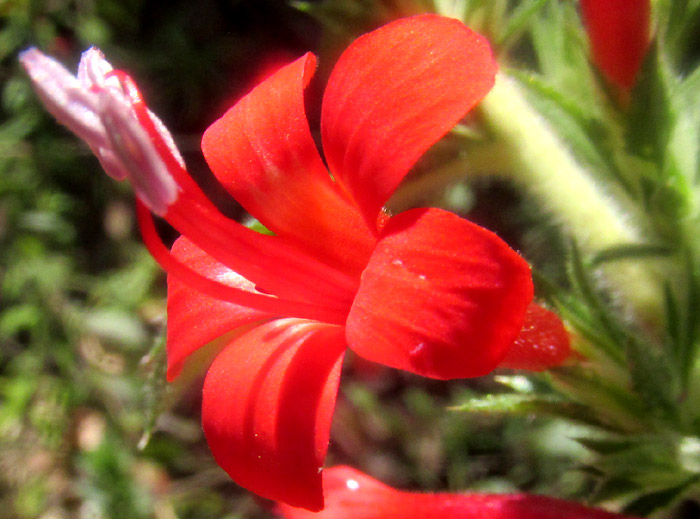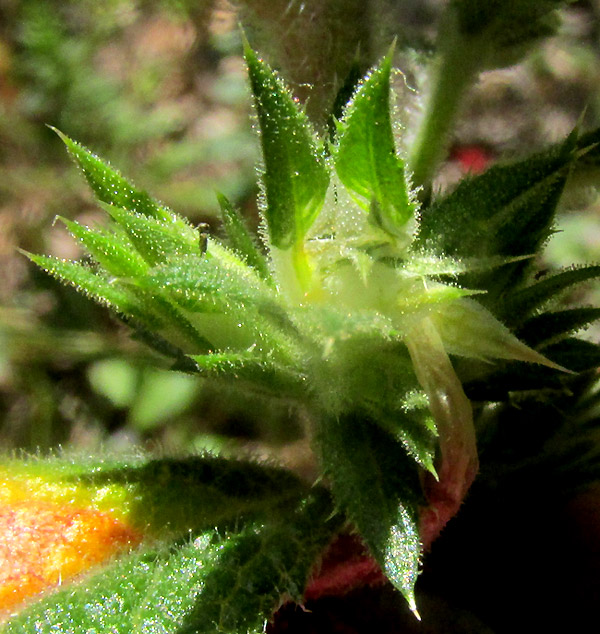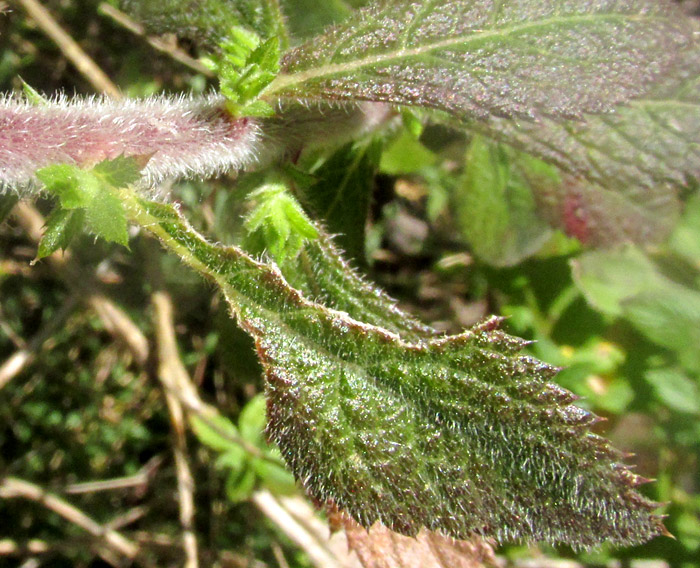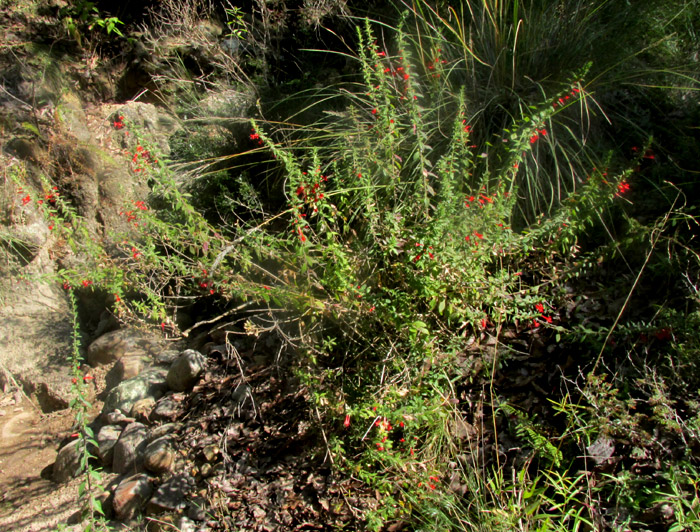Excerpts from Jim Conrad's
Naturalist Newsletter
Entry dated November 7, 2023, from notes taken at Cascadas de La Piedad waterfall 3kms NW of the community of San Pablo, municipality of Almeaco de Bonfil; bedrock of igneous andesite; N20.1024°, W100.0019°, elevation 2360 meters (7750ft); extreme southern Querétaro state, MÉXICO
LOESELIA MEXICANA

Slender stems of the above plant stood about 1.5m high (5ft) amid tall clumpgrasses at the edge of a low ledge in a bolder-strewn, erosional gully. Sometimes the stems stood alone but other times they appeared to be branches of dense shrubs. In this fractured, craggy landscape, the red flowers drew attention from a long way off.

The corollas consisted of slender tubes which gradually widened upwards before splitting into five back-curving lobes. Five stamens emerged from the tube with long, upward-curving filaments tipped with oversized, purplish anthers. This was a surprising combination of features, but when I reached for the stem to take a closer look I got a bigger surprise: The herbage was stiff and painfully prickly despite bearing no obvious spines or thorns. Sepal tips and leaf teeth bristled with needle-sharp points.

Above, several calyxes -- one with an old, withered corolla dangling from its center -- gather in a leaf axil, with several miniature leaves weirdly rising amid them, all tipped with needlelike tips and all bearing glands on short stalks.
At this point I had no idea what family this plant might belong to. From not far away, it looked like one of several commonly occurring species of bushy semi-shrubs bearing tubular, red hummingbird-pollinated flowers, but the above combination of features didn't match any of them.

Leaves were simple, with toothed margins, and each tooth was needle-tipped. The stem and leaves all were densely mantled with slender, often gland-tipped hairs. Here's what a particularly bushy plant looked like:

It took a while to figure out the family this plant belonged to and, when it finally was recognized, I found it hard to believe. It belongs to the Jacob's Ladder or Phlox Family, the Polemoniaceae, which I've always visualized as a mainly North American, temperate zone plant. Plants I knew in the family were soft-herbaceous species, typical of moist wooded areas. There were the tender springtime wildflower Jacob's Ladder, and various Phlox species grown in gardens and appearing as wildflowers, such as the Prairie Phlox we saw in Texas. True, those plants' flowers tended to be purplish, and to consist of five sepals, five petals, and five stamens, but everything else was so unlike this plant. Later I'd be reminded that a prime feature uniting the family was that the species' ovaries usually were composed of three fused chambers, or carpels.
Whatever the case, in our part of upland central Mexico, if you have a member of Polemoniaceae whose corollas are less than 3.5cm long (1.4inch) and the flowers' calyxes are surrounded by bracts, you have the genus Loeselia, currently comprising about 19 mostly Mexican species distributed from southern Arizona in the US south through Mexico and Central America into Venezuela. No English name is generally applied to species in the genus, though sometimes they're referred to as loeselias. Interestingly, we've already met Loeselia coerulea, but that species' overall appearance was so different from this one that I never made the connection.
In our upland central Mexico region, about five Loeselia species have been documented. Here, if your Loeselia is red-flowered, you have LOESELIA MEXICANA, with no commonly used English name, though sometimes English authors use what may be the most commonly applied Spanish name, espinosilla, reflecting its "a little spiny" nature.
Loeselia mexicana is described as a common and sometimes abundant component of upland disturbed areas in oak/pine zones, as well as dry scrub and tropical-deciduous forests, especially in regions with igneous bedrock.
This plant has a long history of use in traditional Mexican medicine. In the mid 1500s, the Aztec Martín de la Cruz wrote in the Nahuatl language about 250 medicinal herbs used by the Aztecs. This compendium in 1552 was translated from Nahuatl into Latin, creating the important historical work today known as the Libellus de Medicinalibus Indorum Herbis. In that work, three medicinal uses were documented for our plant -- known in Nahuatl as huitzitzilxochitl, meaning "hummingbird plant": for tiredness, for being stuck by lightning, and for a childhood condition something like rashes. Currently on eBay in the US, a 4oz package of "Quality Fresh Espinosilla," a "product of Mexico," can be purchased for US $10.49, marketed for falling-out hair -- "¡Para la caida del cabello!!¡!"
The online Plantas de la Medicina Tradicional Mexicana reports that mostly the plant is used for fever, symptoms of the cold or flu, various digestive disorders, typhoid, "winds" and vomiting. Elsewhere, the species has been regarded as useful in treating superficial wounds in general.
However, though several studies report that the plant contains compounds often found to be of therapeutic value, until now no clinical studies have revealed the plant's usefulness in medicine, probably because no detailed studies have been forthcoming.